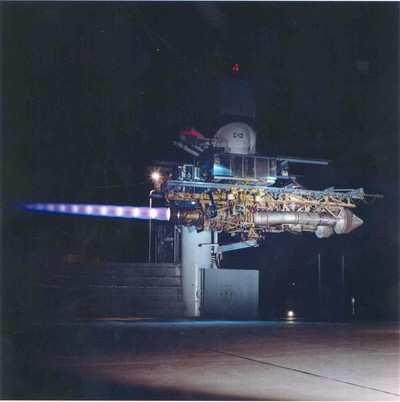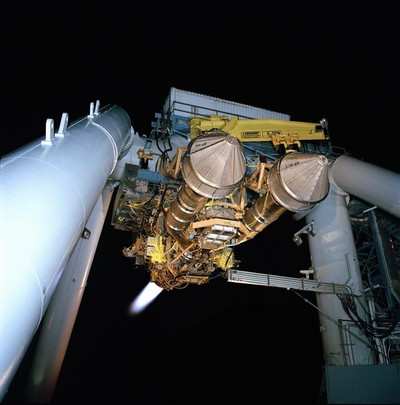Mon, Dec 13, 2010
Pratt & Whitney Says It Has Shifted From Development To
Production Mode
The first production F135 Short Take Off/Vertical Landing
(STOVL) engine for the F-35 Lightning II has been delivered by
Pratt & Whitney, which the company says is a clear
demonstration that the F135 STOVL propulsion system has
transitioned from development to production.

F135 STOVL Engine Bench Test
"The F135 engine program accomplishments this year have been
historical, and this first production STOVL delivery milestone
demonstrates our commitment to fielding the most advanced military
jet engine technology to the benefit of the war fighter," said
Bennett Croswell, vice president of F119/F135 Engine Programs for
Pratt & Whitney. "We are particularly proud to be producing the
most advanced propulsion systems ever built and that they will be
used by the United States Marine Corp and our allies."
The Pratt & Whitney F135 continues its steady progress
through development testing and validation, into full production
and sustainment. The F135 propulsion system has powered 509 flights
and more than 740 flight test hours to date. The F135 has also
completed more than 20,000 hours of testing - 3,600 test hours
during the concept demonstration phase, 15,800 test hours during
development and more than 700 hours powering the F-35 Lightning II
flight test program. The Conventional Takeoff and Landing (CTOL) /
Carrier Variant (CV) engine received Initial Service Release (ISR)
in February 2010 indicating that the engine has met the ISR
requirements for safety, reliability, durability and performance,
and that it is now cleared for use in the field. Pratt &
Whitney has delivered all F135 flight test engines required for the
program as well as 11 production engines, which includes the first
STOVL F135 delivery. The STOVL F135 engine has completed all
required testing and is on track to receive ISR certification
before the end of the year.

F135 Engine Testing File Photo
"With both the CTOL and STOVL variant F135 engines in production
and performing well in flight test, it is clear that the F135 has
demonstrated and earned its position as the Department of Defense's
propulsion system of choice for the F-35 Lightning II," Croswell
said.
Pratt & Whitney says the F135 propulsion system has proven
through extensive ground and flight test experience that it can
meet diverse aircraft requirements for armed forces around the
world.
More News
Pilot Also Reported That Due To A Fuel Leak, The Auxiliary Fuel Tanks Were Not Used On June 4, 2025, at 13:41 eastern daylight time, a Piper PA-23, N2109P, was substantially damage>[...]
From 2023 (YouTube Edition): Reflections on War’s Collective Lessons and Cyclical Nature The exigencies of war ought be colorblind. Inane social-constructs the likes of racis>[...]
Pilot Reported That He Was Unfamiliar With The Single Seat Amateur-Built Airplane And His Intent Was To Perform High-Speed Taxi Testing Analysis: The pilot reported that he was unf>[...]
From 2023 (YouTube Edition): First Kits to Ship October 2023 Having formerly resurrected the storied shape of the Ryan ST—in effigy, anyway—Montrose, Colorado-based Tim>[...]
Performance-Based Navigation (PBN) [ICAO] Area navigation based on performance requirements for aircraft operating along an ATS route, on an instrument approach procedure or in a d>[...]
 NTSB Prelim: Piper PA-23
NTSB Prelim: Piper PA-23 Classic Aero-TV: One Mans Vietnam
Classic Aero-TV: One Mans Vietnam NTSB Final Report: Capella Aircraft Corp FW1C50
NTSB Final Report: Capella Aircraft Corp FW1C50 Classic Aero-TV: Timber Tiger Touts Curtiss Jenny Replicas
Classic Aero-TV: Timber Tiger Touts Curtiss Jenny Replicas ANN's Daily Aero-Term (07.04.25): Performance-Based Navigation (PBN) [ICAO]
ANN's Daily Aero-Term (07.04.25): Performance-Based Navigation (PBN) [ICAO]




